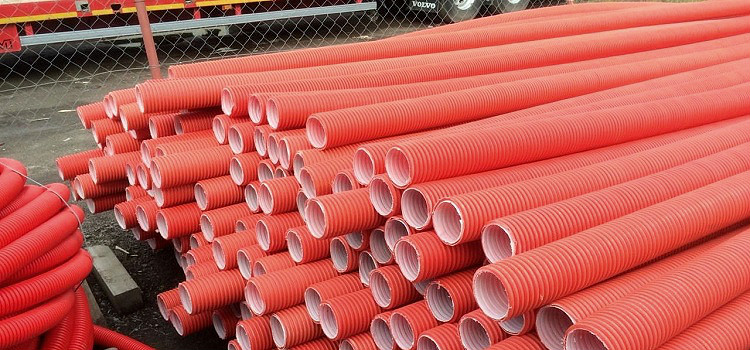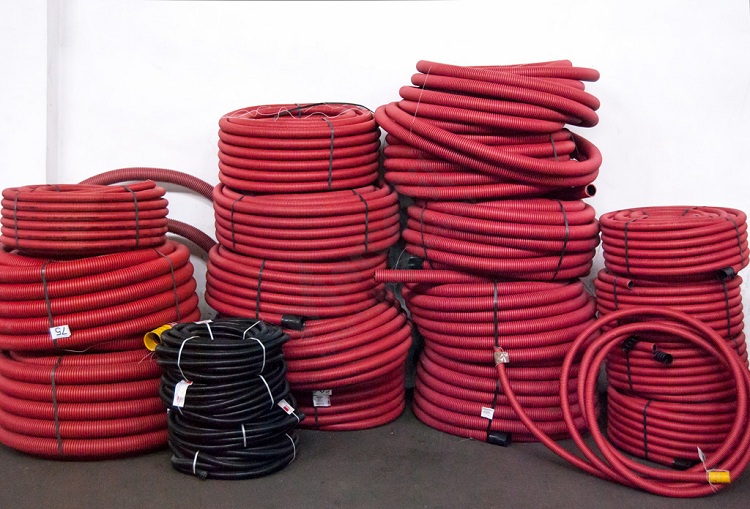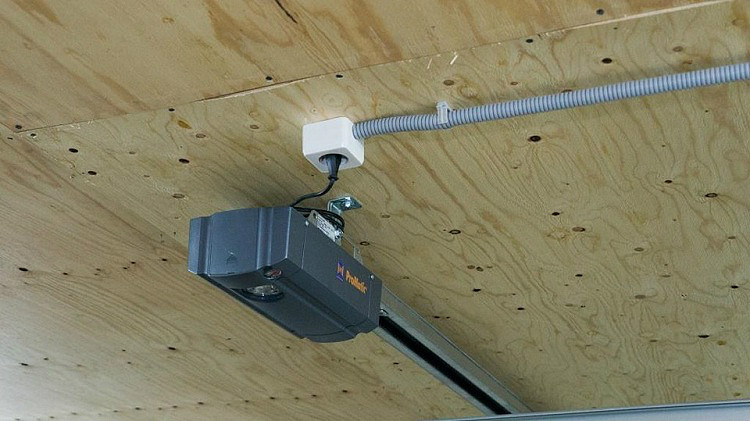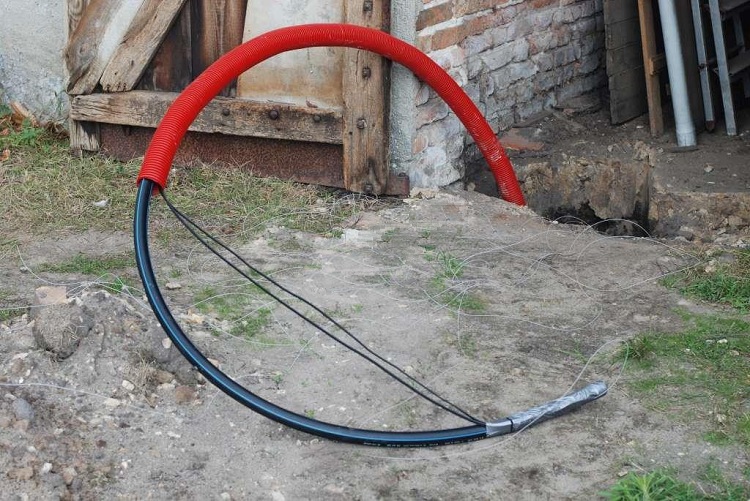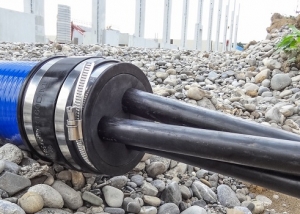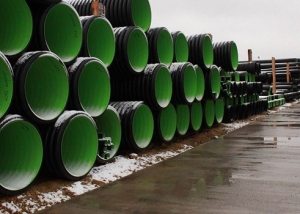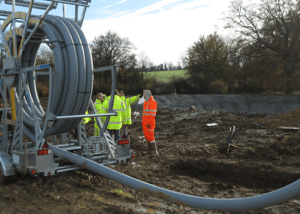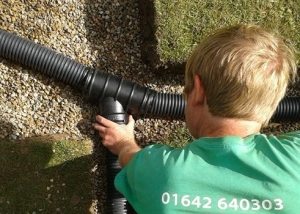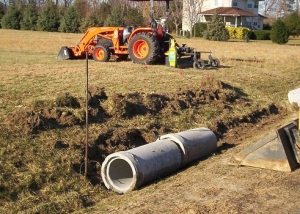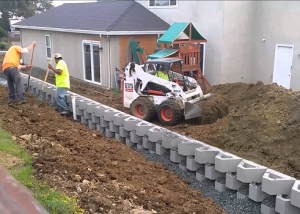The DKS pipe (the name comes from the company that produces these products - JSC "Dielectric Cable Systems") is made of various polymers and serves to protect electrical wires from external influences. The scope of this product is quite extensive: residential buildings, factories, warehouses, etc. With their help, you can perform wiring of electrical networks of almost any type.
Content
Features and advantages of pipes DKS
Such parts are made in the form of hollow, cylindrical structures from a variety of polymers (PVC, HDPE, PP). They do an excellent job with the protective function. Also, the wiring made in such pipes has a more aesthetic appearance and can be suitable for any room design. Installation of such pipes can be carried out both openly and covertly. In addition, the installation of BCS structures can be performed on the walls, floor, ceiling, under the floor, in the walls, etc.
Today, there are several types of these products and all of them have their pros and cons. Consider the main types of BCS pipes:
- tough;
- flexible;
- metal;
- polyethylene (PE);
- polypropylene (PP).
Important! The voltage in the electric network where the BCS pipe is used should not be more than 1000 V. Neglecting this item can be life threatening.
Highlight such advantages of DCS products:
- light weight;
- wear resistance;
- resistance to low temperatures;
- long service life (up to 50 years);
- environmental friendliness (do not emit harmful substances that can cause harm to human health);
- resistance to ultraviolet rays;
- vibration resistance;
- lack of need for frequent preventive checks;
- nice appearance (masking wires);
- ease of installation.
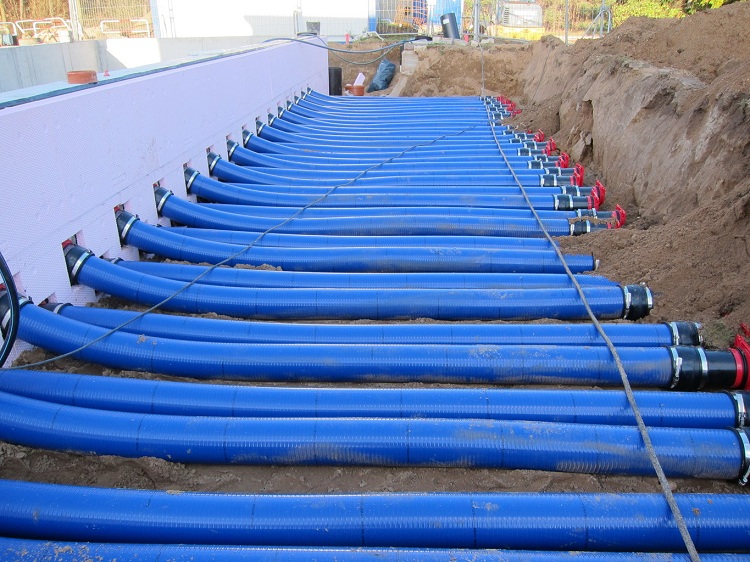
Pipes of this type are resistant to loads, therefore they are used for laying networks in difficult conditions
Types and characteristics of BCS pipes
Wires that are pulled inside the BCS structures must consist of non-combustible materials or low-combustible (equipped with insulation).
Installation of BCS communications can be:
- hidden;
- partially hidden (combined installation type);
- open.
In addition, all these products are divided into:
- smooth;
- corrugated.
Corrugated pipe, in turn, happens:
- single wall;
- double-walled.
Single-wall type is used in cases where the design will not be subjected to high loads. The main task of single-wall DKS products is to protect cable communication from moisture and dirt. Installation of such a system is quick and easy. In addition, this system is budgetary and has become quite popular in apartments and private homes.
A double-walled line is used when increased protection of the wiring is required. Products with large diameters can withstand high loads and are laid in a closed way. DKS cable lines are used for laying wires that have lightweight properties due to their protective sheath.The absence of a metal protective layer reduces the weight of the communication, makes it cheaper and easier to install.
Double-walled corrugated DKS pipe
The double-walled corrugated pipe DKS consists of two layers: smooth inner and outer corrugated. The outer layer is made of low pressure polyethylene, and the inner one is made of high pressure polyethylene.
Such products stand out against the background of others with high rates of ring stiffness, which allows them to resist serious mechanical stresses. In addition, they have a deformation coefficient, which is 10%. This quality is incredibly useful as it protects the system from loss of tightness.
In terms of stiffness, such pipes are distinguished:
- flexible double-walled corrugated;
- reinforced double-walled corrugated.
Let us consider in more detail the main areas in which the use of such parts as protective elements of electrical wiring is firmly entrenched:
- Power supply. Double-walled DKS pipes are widely used to protect electric networks in conditions of moving soils, as well as in soils with a high humidity index.
- Department of Housing and Utilities. In this area, DCS products are used as an alternative to armored cables, which are used for street lamps and lighting devices of advertising signs and posters.
- Transport infrastructure. Installation of DKS products for the transport system is carried out under the road surface, namely: highways, railways, airport runways.
- In private homes. In this case, they are often used as a structural element of drainage and irrigation systems.
Characteristics of double-walled corrugated pipe DKS
A double-walled corrugated pipe is primarily classified by series number: today the most common groups are under numbers: 7, 9, 10. Depending on the series, these products are made of various polymeric materials. Series 7 is represented by parts made of low pressure polyethylene (HDPE). The main advantages of such products include:
- resistance to acidic environments;
- reliability;
- resistance to ultraviolet rays;
- ability to tolerate adverse environmental conditions.
Series No. 9 is made of polyvinyl chloride (PVC) and can be represented by two types of pipes:
- lungs;
- heavy.
Helpful information! Heavy corrugated pipes of the 9th series are used for concealed laying, for example, under concrete parts of buildings, and are capable of carrying heavy loads. Lungs are used as protective elements for wires and cables inside a building.
The main advantages of products manufactured under this number include:
- excellent protective characteristics;
- resistance to mechanical stress;
- strength;
- heat resistance;
- fire resistance;
- moisture resistance.
Products of the 10 series are made of polypropylene (PP) and have such positive qualities:
- wear resistance;
- anticorrosive properties;
- ability to carry out work in contact with active chemicals;
- conductivity of electric current.
The inner layer is made smooth in order to minimize the friction force arising from the contact of the wiring and the inner surface of the two-layer pipe during operation of such a structure. This greatly facilitates cable pulling.
The choice of the diameter of the BCS corrugated pipe
DKS corrugated parts have a wide range of diameters, the choice of which depends on the specific case. Consider the basic rules for selecting the diameters of such pipes in certain situations:
- for devices that perform lighting functions, as a rule, parts with a cross section of 16 mm are used.
- for switches and sockets conduct products DKS with a diameter of 20 mm.
- the wiring from the auxiliary switchboard to the main is protected by pipes whose diameter is at least 25 mm.
The internal and external diameters of the BCS pipes are presented in table No. 1.
Table 1
| Diameter | Inner diameter mm | Outer diameter mm |
| 63 | 50,6 | 63 |
| 50 | 39,6 | 50 |
| 40 | 31,5 | 40 |
| 32 | 24,5 | 32 |
| 25 | 18,3 | 25 |
| 20 | 14,1 | 20 |
| 16 | 10,7 | 16 |
- To protect the wiring between two switchboards, DCS pipes with a cross section of at least 32 mm are used.
- for inter-floor wiring, products with a diameter of 40 to 50 mm are used.
- wires for telephones and alarms are protected by pipes with a cross section of 16 mm.
- for coaxial systems, products with a cross section of 20 mm are ideal.
Note! Some products go on sale immediately with additional components, which simplifies the purchase and installation of structures from them. The connection between the two corrugated pipes may be a sleeve or some other. However, connection using couplings is recommended by specialists for reliability and to increase the operational life of BCS pipes.
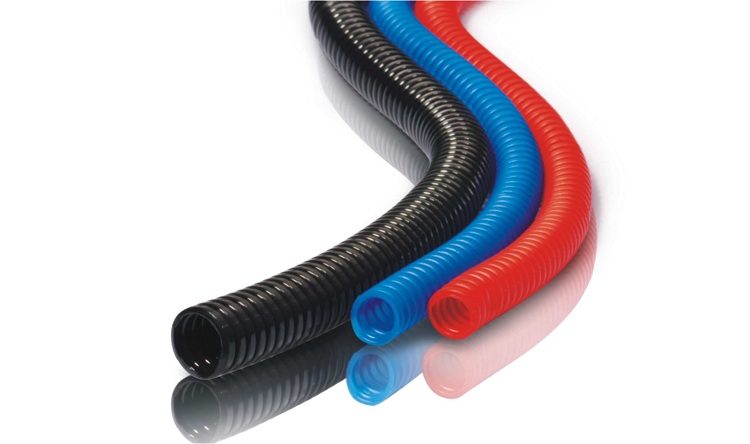
The diameter of the pipes is selected based on the type of cable and the method of laying the network
Tips for laying corrugated pipes DKS
There are several points that should be considered when installing two-layer corrugated BCS parts. For proper installation, it is recommended that you carefully study each of them.
- When assembling a structure of two-layer corrugated pipes, sharp corners and several angles located next to each other should be avoided;
- the working distance for cable routing in the pipe tube is about 20–25 m. Exceeding these parameters without special devices is strictly prohibited;
- special transit boxes are used to increase the communication length, and the location of such boxes should be as close as possible to the middle of the existing section;
- It is strictly forbidden to carry out the wiring of several non-connected electrical networks;
- It is important to remember that the choice of product for cable wiring depends on the direction of the power supply.
- in monolithic structures at the construction stage, heavy corrugated pipes DKS are used, which are carried out until the reinforcement skeleton is filled with cement mortar. Thus, they find themselves in the walls. The cable is carried out last.
- The construction embedded in the walls of the building is durable and allows for cable replacement at any time during operation.
DKS pipes are distinguished by a huge assortment of products, which vary depending on the diameter, quantity and wall thickness, as well as on the surface composition (smooth, corrugated). Each of the types of BCS products is unique and has found its application in any industry. The double-walled part with ribbed (corrugated walls) is very popular, which, with the right choice and observing the installation rules, can last a long time, protecting the wiring from external influences.
